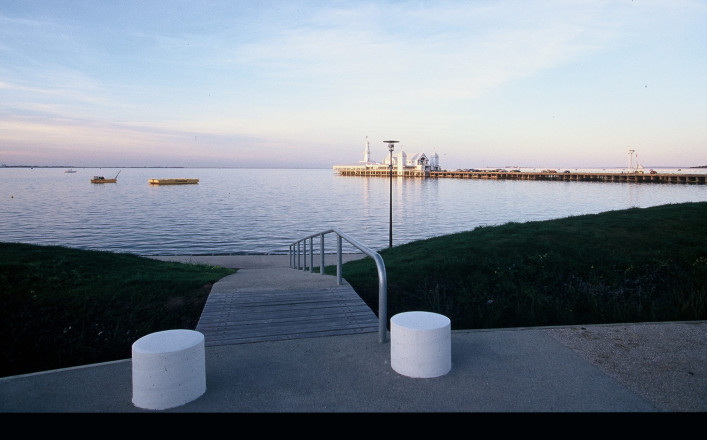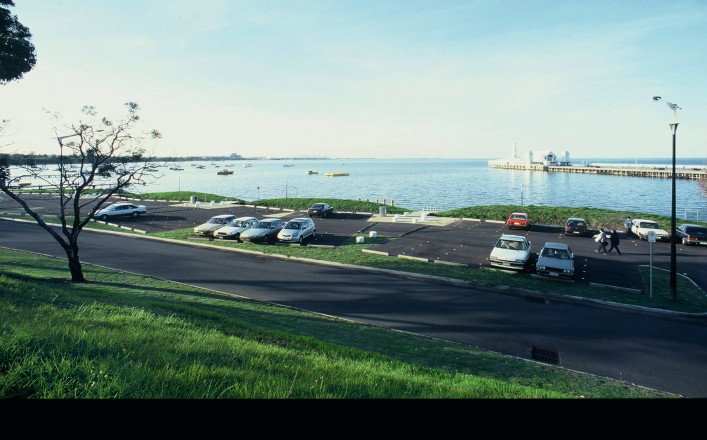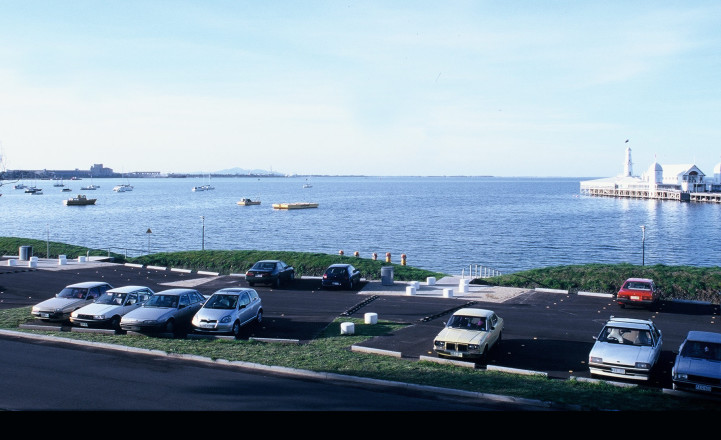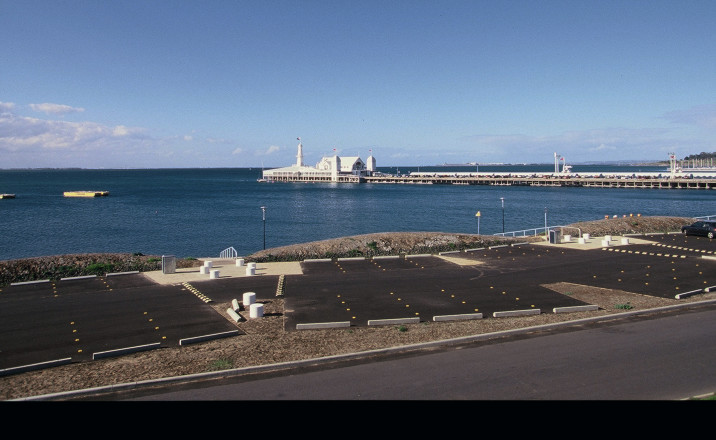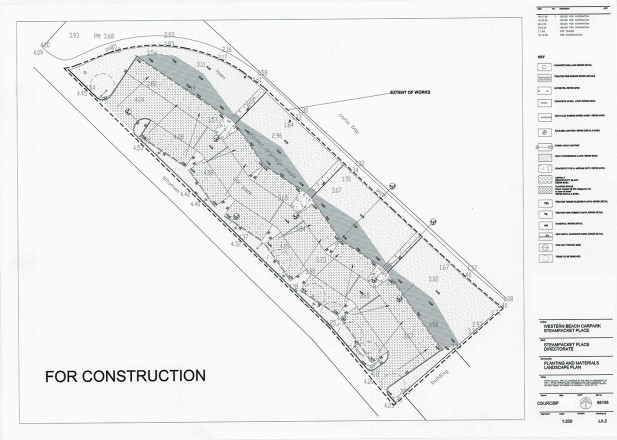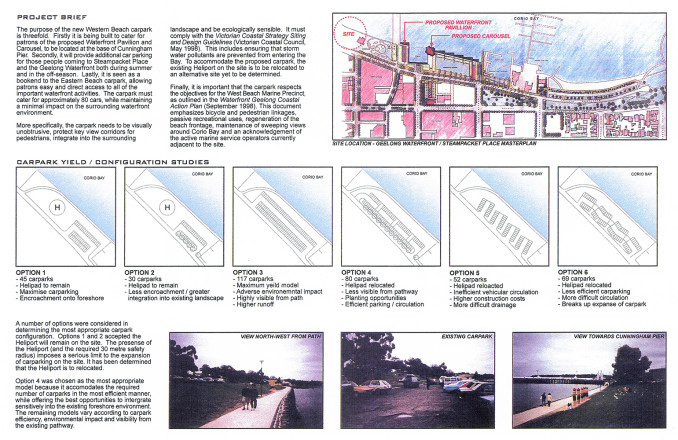Western Beach Car Park
Western Beach Car Park
(use scroll bar on right side of this window to read description)
LOCATION: The urban waterfront of the City of Geelong, Victoria, Australia
CLIENT: City of Greater Geelong
AILA Award for Transportation
With the extensive redevelopment of Geelong’s waterfront there was high demand for more parking. The design for the new Western Beach car parking facility had to provide the maximum possible number of parking spaces, possess aesthetic appeal and have minimal impact on the water quality of the fragile bayside environment, while meeting tight budget requirements. Balancing technical issues with aesthetic considerations was the challenge of this project.
Weaving its way along the Geelong Foreshore is the Baywalk, a pedestrian spine linking activities. The new car parking area provides a memorable and accessible connection to the Baywalk and offers a positive seaside entry, parking and walking experience. The layout of the parking is broken up into angled sections to avoid the typical bland strip of cars. Timber platforms, flush with the paving surface, create safety islands. Surface water is collected into a long narrow bio-retention swale, paralleling the shoreline, between the parking area and the newly constructed ‘dunes.’ Assessment of soil and subgrade led to calculated design of ballast-lined bio-retention swale sufficient to hold run-off for 100 year storm-event. The swale, viewed as ephemeral ponding, is planted with suitable plant species to tolerate periodic inundation. The ‘dune’ earth mounding is covered with waving 3’ high indigenous grasses and obscures the visual impact of the car park from the users of the Baywalk at the water’s edge. The layout and elements of the parking area reference the maritime context of both the working waterfront and the natural coastline features. White cylindrical bollards, underlit at night, direct users to entry points and sit as drums or mooring piers. The sloped paths leading towards the water’s edge act as gang planks, with low timber bridges crossing the bio-retention swale. The ‘dune’ mounds and planted swales mimic a ‘backbeach’ natural condition. Slim vertical lamps stand as masts beyond the mounds. Delineating spaces on the parking surface are highway cats’ eyes, which glow at night. They resemble sea glass and shells on the shore. The unusual wave form of the car park itself, visible from the roadway and escarpment above, and experienced upon entering the space, is a compelling gesture. An avenue of araucaria (Norfolk Island Pine), a common sight along the inhabited coastline of Australia, lines the roadway and provide shade.
The project won an AILA Victorian Chapter Award for Transportation.
